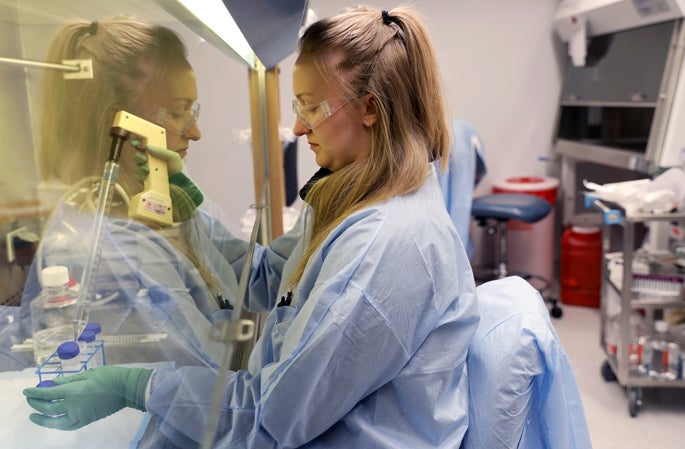Established in 1991, the Vanderbilt Center for Technology Transfer and Commercialization wasted no time proving its effectiveness.
While that year’s tally of accomplishments—eight patents applied for and seven granted, $137,000 generated in commercialization revenue, and three licenses executed—was impressive, it was only a fraction of the CTTC’s performance in the intervening decades.
The center’s mission is to provide top-notch commercialization services to the Vanderbilt and Vanderbilt University Medical Center communities. That streamlines campus innovation’s path to the marketplace, which, in turn, generates revenue that can support more research.
“Commercialization and entrepreneurship amplify and accelerate the impact of Vanderbilt research and scholarship, allowing the university to provide direct, deeply transformative and scalable benefits to society,” Chancellor Daniel Diermeier said in 2022. “We are proud to be fostering a culture where trans-institutional collaboration and innovation are top priorities.”
The center’s impact is well established. In fiscal year 2022 alone, it generated more than $100 million in licensing revenue—quadruple its annual average—and reviewed more than 1,000 material transfer agreements and facilitated nearly 300 U.S. patent applications.
“Vanderbilt is successful at facilitating research and leveraging innovation because of the pervasive spirit of collaboration and cooperation on campus,” said Chris Harris, CTTC licensing director. “Our team is energized by the scholarship that we are able to shepherd to commercialization.”
Examples of products that entered production with help from the CTTC include the following:
- Reusable energy-absorbing crash cylinders, which can be seen on highways across the country, were a brainchild of Professor John F. Carney III in the 1990s. The CTTC helped Carney promote his design to companies, and the U.S. Department of Transportation approved their use in 1995.
- READ 180, a reading intervention program for students in elementary, middle and high schools, was developed in the 1980s by Professor Emeritus of Special Education Ted Hasselbring and collaborators. In 1999 the CTTC facilitated a partnership with Scholastic that got READ 180 widely distributed. It is still available through Houghton Mifflin Harcourt.
- Evusheld, the COVID-19 prophylactic therapy, was discovered at the Vanderbilt Vaccine Center in the lab of its director, Dr. James Crowe, Ann Scott Carell Professor and professor of pediatrics and pathology, microbiology and immunology at the School of Medicine.
The CTTC strives to be an efficient and effective conduit for the transfer of promising intellectual property to industry; to contribute to regional economic development by licensing locally and supporting new venture creation; and to encourage greater translational research collaborations between academia and industry.
“Through our investments in industry collaboration, new ventures and enhancing faculty resources, we are serving as a catalyst for innovation that will continue to yield bold solutions to the world’s most pressing problems,” Provost and Vice Chancellor for Academic Affairs C. Cybele Raver said.
